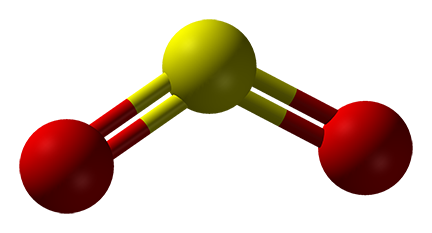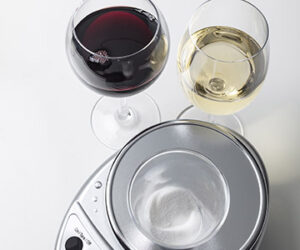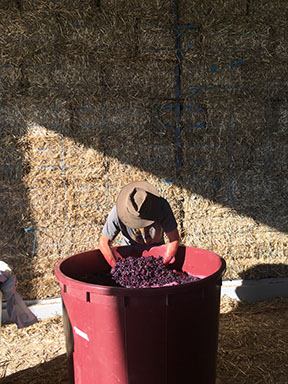
When I first started making wine at home, I understood the role and importance of sulfite in preserving wine, but I never could get the same answer twice to my queries on how much sulfite I should add. Sulfite additions seemed akin to witchcraft, rather than being based on established chemical principles.
To this day, many home winemakers are confused about sulfite or shun the practice on the grounds that sulfite is a harmful chemical. We still seem to be intimidated by the use of sulfite, in spite of its long history and use in winemaking.
Sulfite is the most effective and widely used preservative in winemaking. It safeguards musts and wines against premature oxidation and microbes that could otherwise spoil wine. It preserves the wine’s freshness and helps maintain its color, and is essential for aging wines. Another common use is in inhibiting wild yeasts to allow cultured wine yeasts to carry out the alcoholic fermentation.
Let’s try to demystify sulfite by reviewing some fundamental chemistry. This will help us understand how sulfite protects wine and how much “free SO2” we are introducing into our wine.
What Is Free SO2?
The most effective preservative and sanitizing agents used in winemaking are chemicals derived from elemental sulfur. Sulfur dioxide (SO2) gas, formed by burning sulfur has been used since the early days of winemaking to protect oak barrels from microbial spoilage. This practice is still widely used in winemaking to store empty barrels for an extended period of time.
SO2 gas can also be condensed to a colorless liquid to produce a sulfite solution with excellent antiseptic properties. These properties result from the dissipation of active SO2 to produce “free SO2,” and from some free SO2 combining with aldehyde compounds (responsible for oxidation in wines) to form “bound SO2” when sulfite is added to wine. Free SO2 is also found in musts from crushed grapes that have been sprayed in the vineyards with sulfur-based pesticides. It is also a byproduct of alcoholic fermentation, albeit in small concentration.
Two measurements widely used in commercial winemaking are free SO2 and total SO2 — the sum of free and bound SO2. Only free SO2 provides antiseptic and oxidative protection to wines and is therefore the prime consideration for home winemakers. If you want to fully understand the chemistry of free SO2, you should read up on “molecular SO2.” Molecular SO2 is the active component of free SO2 and its effectiveness is dependent on a wine’s pH.
SO2 concentrations are expressed in mg/L (milligrams per liter). One mg/L is equivalent to 1 ppm (part per million).
Measuring Free SO2
Measuring the all-important free SO2 concentration is the home winemaker’s challenge. CHEMetrics manufactures Ripper-method titration cells, sold under the brand name Titrets and available at most home winemaking supply shops, for measuring free SO2 concentration in the 0 to 100 mg/L range. Results are acceptable for dry white wines although they can have an error margin of up to 10 mg/L. Results are not as reliable for red wines or white wines containing ascorbic acid or tannin, but they are satisfactory for home winemaking purpose.
CHEMetrics Titrets are available in packages of 10, good for 10 tests, and cost less than $10 US. Each Titrets consists of an ampoule containing a reagent — iodide-iodate titrant in a phosphoric acid solution and a starch indicator — and a valve assembly. Since the reagent is sealed under vacuum, the titration cells have an unlimited shelf life. Alternatively, if you are an experienced home chemist, you can purchase all necessary equipment and chemicals separately.
To measure free SO2 using Titrets, the valve assembly is fitted over the ampoule. The tip of the ampoule is snapped to allow the vacuum to draw a small wine sample when the valve is immersed in the wine. The wine reacts with the reagent and turns to a deep blue color. A small wine sample is repeatedly drawn into the ampoule until the color changes to colorless for white wines, or to the color of the red wine for red wines. For the latter, the color change is hard to notice. Try viewing the ampoule with a strong light behind to determine the point of color change.
Another trick to help improve color change detection in red wines is to dilute the wine sample by 50 percent, for example. The test result should be compensated accordingly to obtain the actual free SO2 reading. For example, if the wine is diluted to 50 percent and a free SO2 reading of 20 mg/L is obtained, the actual concentration is 40 mg/L.
Sources of Sulfite
In winemaking, “sulfite” is used as a generic term to refer to either the white (sulfurous acid salt) powder used in preparing a sulfite solution, to the sulfite solution itself, or to free SO2 in musts and wines.
Sulfite is available as two common powders: potassium metabisulfite or sodium metabisulfite. Potassium metabisulfite can be used to sanitize winemaking equipment and also as a preservative in musts and wines. Sodium metabisulfite should be used strictly for sanitizing equipment and should never be added to wine.
Potassium metabisulfite is available in either powder or Campden tablet format. The 0.44-g Campden tablets are most practical for adding sulfite to 19-liter (5-gallon) batches — 1 tablet adds about 12 ppm. (Campden tablets come in different sizes and doses, so check before you buy.) Tablets must be crushed to a powder before they can be dissolved in water. This is tedious for larger batches, so the powder is more convenient and can be measured to the exact quantity required.
There are other products on the market that contain other chemicals in addition to potassium metabisulfite. For example, Tannisol tablets contain ascorbic acid (used to increase the effectiveness of sulfite) and tannin, and Oenosteryl tablets contain potassium bicarbonate (used for acid reduction). Such products are convenient if you want to add all listed chemicals in the given proportions. Just make sure that those proportions are listed on the product label, otherwise, you really don’t know what you’re adding to your wine.
One advantage of tablets is that they are conveniently packaged for standard volumes, such as 54-liter demijohns. Tablets will need to be split to the required quantity for smaller volumes, which can cause inaccurate additions. It’s always best to add ingredients individually in the required quantities to better manage chemical additions.
The key question now is: How much free SO2 is really added for any given amount of sulfite? Potassium metabisulfite and Campden tablets consist of approximately 57 percent and 48 percent SO2, respectively. This means that roughly half of the sulfite actually becomes free SO2 when a solution is prepared and added to wine. This is important to understand since it is often believed that the entire sulfite amount protects the wine.
Sulfite as Preservative
A minimum free SO2 concentration should always be present to effectively protect wine, but without exceeding prescribed nominal levels. You should have enough sulfite to protect the wine from microbial spoilage but not so much that it can be detected when drinking it. The taste or smell of sulfite is considered a serious wine fault.
Before adding sulfite to must or wine, you have to determine the current free SO2 concentration. Recipes often instruct to add, for example, 50 mg/L of sulfite. This can spell problems if the level of free SO2 in the wine is already high. You really only need to add the incremental amount of sulfite, if any, to obtain the desired free SO2 concentration. Note that free SO2 may already be present in juice — producers add sulfite prior to shipping to deter spoilage — and concentrates as well as juice from freshly crushed or pressed grapes.
As a rule of thumb, always maintain the free SO2 concentration between 25 and 50 mg/L throughout the winemaking process, including bottling. The amount depends on how much sulfite you want and on the quality of the grapes. When making wine from grapes, target a level of 50 mg/L at crushing, or up to 100 mg/L if you suspect any problem, such as moldy grapes.
Secondly, determine ahead of time what type of wine you want to make and the vinification methods you will be using, and then plan your sulfite additions accordingly. Are you making wine from grapes, sterilized juice or concentrate? What type of yeast will you use for alcoholic fermentation? (For more information on selecting yeast, see “The Strain Game” in the Fall 2000 issue of WineMaker.) Will you be making a bottle-fermented sparkling wine? Are you planning a malolactic (ML) fermentation to convert the harsher malic acid into the more supple lactic acid? The success in achieving desired results is highly dependent on careful free SO2 management. Exceedingly high levels of free SO2 can cause a sluggish or stuck fermentation.
How to Add Sulfite
The simplest and most effective way of adding sulfite to must and wine is to make a 10 percent solution and then add the required incremental amount according to the table below. The 10 percent solution is prepared by dissolving 10 g of potassium metabisulfite in a little warm water — it does not dissolve well in cold water — and then topping up with cool water to the 100 mL level. Use a small, inexpensive scale to measure the amount of sulfite powder required. Otherwise, you can use measuring spoons since 1 mL of powder weighs roughly 1 g, and that’s good enough for home winemaking. One tablespoon (15 mL) would then weigh approximately 15 g. This yields a 10 percent error which is further compounded by inaccuracies of measuring spoons. Do invest in a scale if you want to measure quantities accurately.
As an example, if your wine has 10 mg/L of free SO2 prior to bottling and 50 mg/L is desired to protect the wine, then 40 mg/L is required. To protect a 19-liter (5-gallon) batch of wine, this would require the addition of 0.70 mL/L x 19 L = 13 mL of the 10 percent solution.
If you prefer to add sulfite powder or Campden tablets instead of using a 10 percent solution, you will need 40 mg/L x 19L / 1000mg/g / 0.57 = 1.3 g of powder or three 0.44-g Campden tablets. Be sure to dissolve the powder or tablets in water before adding to the wine.
If you bottle your wine within a year, chances are that the free SO2 level will be very close to the level of the last sulfite addition unless the wine has been subjected to many rackings and over-exposure to air. This is why it’s important to check your free SO2 concentration; otherwise you might be adding 50 mg/L of free SO2 to wine that already contains that much.
Remember to always add sulfite to wine before the racking operation to protect the wine from aeration. Alternatively, rack the wine into another vessel containing the required amount of sulfite solution. Stir the wine thoroughly after each sulfite addition. Never add sulfite powder directly to wine — it will not dissolve properly.
Now, what if you have too much free SO2 in your wine; in other words, you can smell it? First, don’t be tempted to just bottle the wine — the free SO2 concentration can be lowered. Target for a free SO2 concentration below 50 mg/L. Proceed to rack the wine vigorously from one vessel to another several times to aerate the wine; let it splash at the bottom of the receiving vessel. This is fine since the wine is very well protected, and the aeration will cause some free SO2 to dissipate. Take a free SO2 reading after 2 or 3 rackings, and repeat until the free SO2 concentration reaches the desired level. Let the wine settle for a couple of months before bottling.
Free SO2 and pH
A wine’s pH affects the free SO2 concentration and must therefore be accounted for when adding sulfite. Specifically, at high pH (low acidity), SO2 effectiveness is greatly reduced and the wine is therefore not as well protected against oxidative effects or microbial organisms which could spoil the wine.
To compensate for the high pH, as a rule of thumb, you should target a free SO2 concentration of approximately 25 percent higher for every 0.1 pH increase above 3.2 (for sweet wines), 3.4 (for white wines) and 3.6 (for red wines). For example, if a free SO2 concentration of 50 mg/L is desired when sulfiting a dry white wine with a pH of 3.8, add sulfite to achieve a free SO2 concentration of 100 mg/L: (3.8-3.4)x10x25%=100% more. Remember to compensate for any free SO2 already present.
Ascorbic Acid
Ascorbic acid (vitamin C) has anti-oxidative properties that make it a good preservative, specifically in preserving color in white wines. However, it should strictly be used in conjunction with sulfite to increase the effectiveness of the sulfite solution. Effectiveness is increased since ascorbic acid decreases the pH of the sulfite solution. Ascorbic acid should never be used without sulfite or without the recommended minimum level of free SO2, otherwise, it will actually favor oxidation.
Ascorbic acid crystals are added at a rate of 0.2 to 0.3 g/L of must or wine when adding sulfite by first dissolving the crystals in water. Dosage should never exceed 1 g/L to avoid imparting an off-taste to the wine.
Sulfite and Oak
Sulfite is effective in storing used oak barrels for an extended period of time. A sulfur-citric holding solution prepared from 2 g of potassium metabisulfite and 1 g of citric acid for each liter of barrel volume will promote sterility and keep the barrel smelling sweet.
First fill the barrel two-thirds with cool water. Prepare the holding solution by dissolving the sulfite and citric acid in warm water in a small glass container. Add it to the barrel, top it up with cool water and bung it for storage. Remember to top up the barrel with fresh water or more holding solution every month. Rinse the barrel several times with fresh water and drain it completely before adding new wine.
The use of a holding solution is not recommended for new barrels or barrels less than one year old as the oak extract will be stripped in the process. Sulfur strips or a sulfur candle can be used in a new barrel to produce sulfur dioxide gas; this will prevent any bacteria or mold from forming.
Sulfite to Sanitize
The purpose of sanitizing winemaking equipment is to eradicate microorganisms and prevent microbial spoilage in wines. The need for sanitization cannot be over-emphasized. It is cumbersome at first, but if you establish a routine, this procedure becomes second nature.
To prepare a sulfite solution for sanitizing winemaking equipment, dissolve 3 Tbsp. of sulfite powder in approximately 1 liter (1/4 gallon) of warm water. Stopper the container and shake it vigorously to completely dissolve the powder. Once dissolved, the container should be topped up to 4 liters (1 gallon) with cool water for a very effective sulfite solution. The container should be kept well-stoppered and the sulfite solution should be used within a few months. Sulfite solution which has been stored for too long (more than one year) will lose its effectiveness. An equal amount of citric acid (3 Tbsp.) can be added to the sulfite solution to increase its effectiveness.
Any equipment which will come into contact with must or wine should be thoroughly sanitized with a sulfite solution. The entire surface of the equipment needs to be in contact with the solution for several minutes for proper sanitization. A thorough water rinse should follow.
Sulfite should not be used for sanitizing stainless steel tanks as it has a tendency to spot these types of containers. A mild cleaner specifically designed for stainless steel should be used.
Be sure to work in a well-ventilated area when working with sulfite. The strong smell can become overpowering and can irritate the nose and throat.
Sulfiting Made Easy
The chemistry of sulfites is fairly complex unless you have a chemistry degree. The basic concepts presented here should enable you to approach sulfite additions with ease and without worrying whether you’ve added too much sulfite — or too little. And remember, you need not worry about minor variations if you stay within the recommended free SO2 ranges . . . unless you run a commercial winery!







